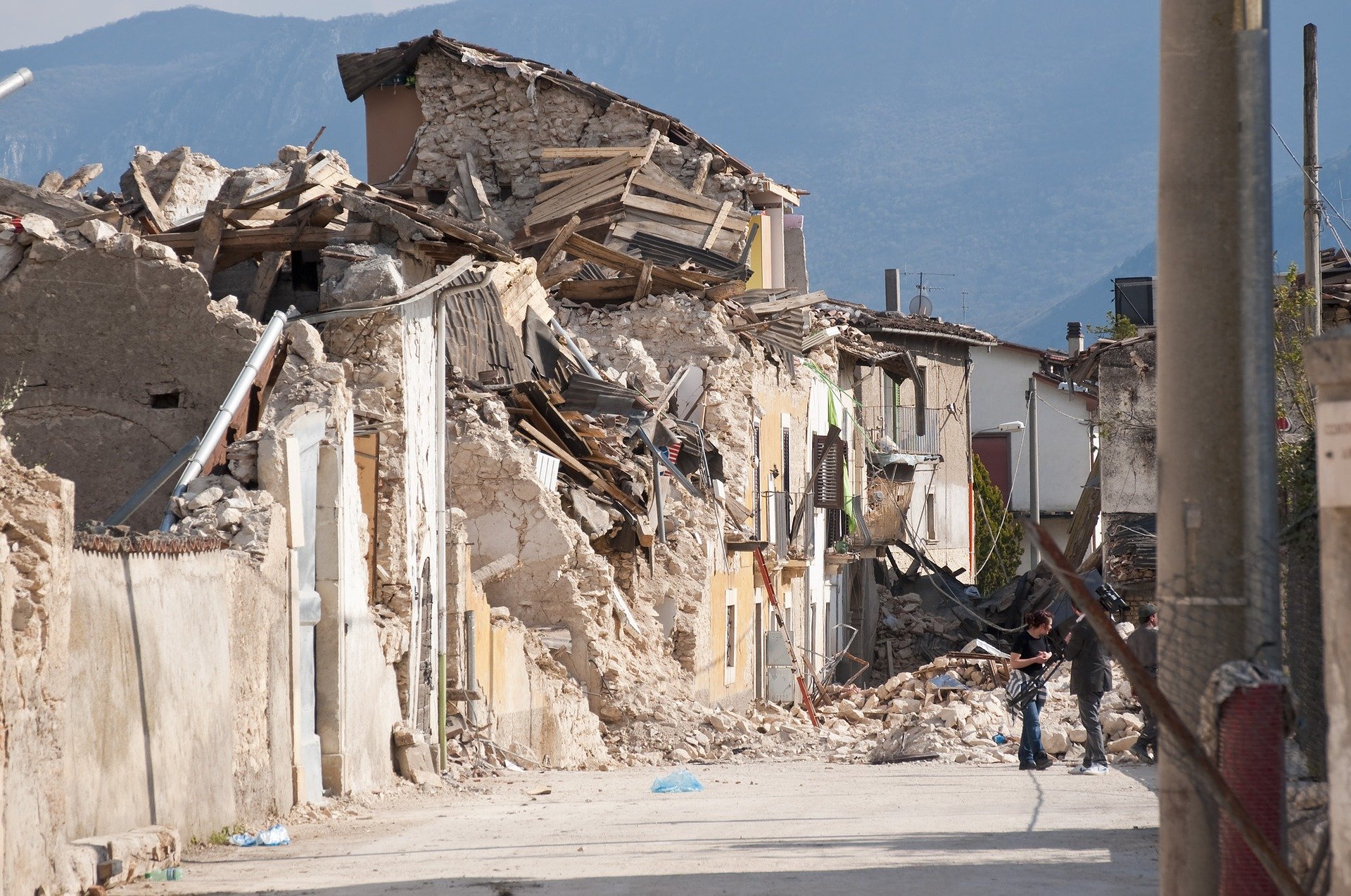
After earthquakes or gas explosions, it often takes far too long to locate and rescue buried victims. To enable rescue workers to obtain better and more accurate information from the situation on site more quickly in the future, international scientists are now developing a modular sensor system for a drone as part of the “Sensor Systems for Locating Buried Persons in Collapsed Buildings” (SORTIE) research project.
“Building collapses often happen suddenly and without warning, such as with gas explosions or earthquakes. Search and rescue teams can usually only move slowly on the unstable rubble of the ruins,” says Prof. Ompe Aimé Mudimu, deputy director of the Institute of Rescue Engineering and Hazard Mitigation at the Cologne University of Technology, Germany, where he heads a subproject on the topic. Thus it is very important to be able to search extensive areas efficiently and safely. Analysis from the air using drones is particularly suitable for this purpose. This would relieve the burden on emergency forces searching for buried victims.
Four modules to support emergency services
By the end of December 2022, the researchers want to develop a modular system for a drone that can be connected to four different sensor packages: “bioradar” to detect breathing movements of buried victims, “cell phone location,” “laser gas measurement” for remote detection of explosive atmospheres, and “debris structure analysis” to evaluate the stability of debris. To ensure the drone would not be too heavy and could stay in the air longer, the sensor packages could be used individually, the scientists explain.
Among other things, the Institute of Rescue Engineering and Emergency Response at the Technical University of Cologne is responsible for determining the functional and technical requirements and for integrating existing operational concepts for SORTIE. It is also responsible for operational and mission tactical implementation. The team has already completed an end-user analysis.
Realistic scenarios
“We worked closely with the German Federal Agency for Technical Relief to determine what the system must be able to do in terms of flight time and other parameters and in which order the modules are best deployed,” explains Lennart Landsberg, a research associate of Prof. Mudimu. “To do this, we created various representative and realistic scenarios that emergency responders could use to address the requirements of such a system by conducting interviews and surveys.”
The team is currently working to incorporate the new technology within the response organization structure. The overall system as well as the operational tactical implementation will subsequently be evaluated and validated through laboratory and real-life exercises. For example, testing will determine whether the flight time of 30 to 45 minutes required by the emergency forces and a module exchange in less than five minutes are feasible and whether a simultaneous use of other locating methods is possible without the devices interfering with each other.
Project partners
Several German institutions are involved in the project: the Albert Ludwigs University of Freiburg (project leader); the Technical University of Cologne; the Fraunhofer Institute for Physical Measurement Techniques, Freiburg; the Friedrich Alexander University of Erlangen-Nuremberg; the University of the Federal Armed Forces, Munich; and the Federal Agency for Technical Relief, Bonn. Since earthquakes mainly occur abroad, cooperation partners from India are also involved.
“International cooperation enables us to profitably transfer experience and knowledge. This allows us to develop a good tool that is suitable for various application scenarios,” says Mudimu. Project partners from India are the Indian Institute of Technology, the Indian Institute of Science, the private university Amrita Vishwa Vidyapeetham, the Indian Ministry of Home Affairs, the National Institute of Disaster Management and the National Fire Service College.
The German Federal Ministry of Education and Research is funding SORTIE with €2.63 million over three years as part of the “Research for Civil Security” program.

